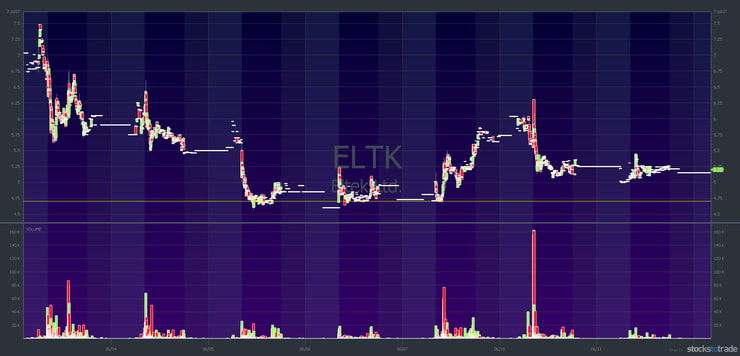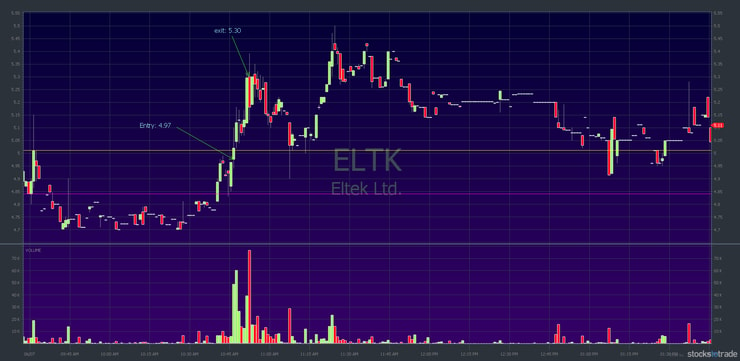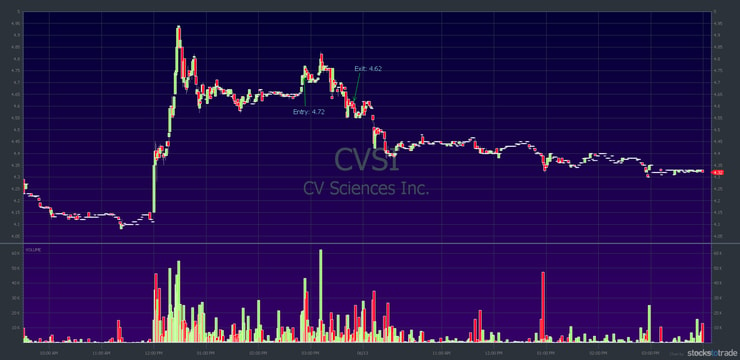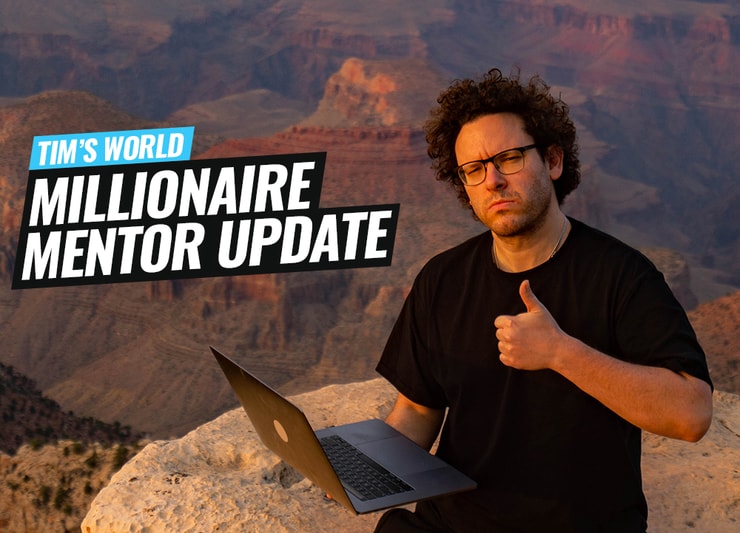Yikes! I threw out my back getting heavy luggage down from the overhead compartment on a flight. More about that in a moment…
First this: Even though I’m in agony, I’m grateful.
Learning to trade makes my awesome life of travel, charity, and teaching possible. My best, most complete offer to teach you to trade is the Trading Challenge. Step into your future — apply today.
Table of Contents
Save the Reef Documentary World Premiere
I’m totally psyched to tell you…
… after six months…
… seven countries…
… hundreds of thousands of dollars…
… and countless hours of work by a team of incredible people all volunteering their time…
… the Save The Reef World Premiere had its world premiere on June 13 in Hawaii.
The Save The Reef project is a real labor of love for me and everyone involved. It’s also an eye-opening experience. This is a crisis that FAR too few people know about. Please share the video!
And you can join the movement here: Save The Reef. While you’re there, click on “Help the Cause” and grab some Save the Reef swag. Please, please spread the word — one social media share can make a difference.
How NOT to Get Your Luggage Down from the Overhead
Oh, man…
I slept well on the flight from Japan to Hawaii. Then when it was time to deplane, I got up but didn’t brace myself for the weight of my luggage. The thing is, I travel so much that my luggage has everything I need for months at a time. In other words, it’s heavy.
This is the first time I’ve thrown out my back. I cursed out loud when it happened and went straight from the airport to the ER. The doctors were kind enough to give me pain meds and tell me to stay off my feet.
It’s not like I had anything to do while I was in Hawaii, right?
Not only did I have a crazy day ahead with the Save The Reef world premiere.
… but we still had final editing to do.
And…
I had to give a webinar for Trading Challenge students on June 12 after the market closed. My back felt like death. I could barely sit to do the webinar, but I could still talk and trade.
My life changed 20 years ago when I had my tennis injury. My dad calls it the ‘million-dollar Injury.’ If I hadn’t been injured, I might have tried to go pro. So it’s probably good that I got injured because I think I would’ve ended up as a mediocre pro … and would’ve wound up bitter about it.
In this case, I don’t think it’s good that I got injured. But there are always lessons when these things happen. Plus, I didn’t let it stop me from doing the webinar because my students are important.
I did manage to keep it in perspective and maintain a sense of humor…
The bright side is when stuff like this happens it gives you a whole new perspective on life…we take SO much for granted, now all I can do is walk around like Smeagol, uhhhhhhh….at least it makes the kids who see me happy 🙂
— Timothy Sykes (@timothysykes) June 12, 2019
Sometimes life hands you lemons, and all you can do is make lemonade…
By the way — follow me on Twitter as part of your trading education. I post my trades there. I also share student wins and losses on my feed. It’s a great place to begin building your knowledge base. But be careful of who you follow. A lot of fakes and newbies try to teach, and they often use Twitter to spread their nonsense.
Lessons from My Recent Trades
So many students want hot stock picks, or they’re only interested in alerts. This is a huge mistake. If you’re a student, pay attention to my watchlist. Even if you’re not yet a paying student, you can watch my trades that I post on Twitter. There’s a reason behind every trade I take.
When you follow my trades you should ask these questions:
- Why am I looking at this trade?
- Why am I thinking about buying or shorting?
- Why am I setting specific goals?
- Why am I being conservative or aggressive?
This isn’t rocket science, but you need to learn the process.
Which leads me to…
Process Is More Powerful Than Alerts: Eltek Ltd. (NASDAQ: ELTK)
This was on my watchlist on Friday, June 7. I was trading from Japan, which is a tough time zone. I don’t recommend trading from there. But I love sushi, and I was working on several new Karmagawa projects.
I was interested in ELTK, but only if it showed me a convincing bottom. It was downtrending off recent highs. You don’t want to buy a stock — especially a penny stock — that keeps downtrending. They rarely bounce.
But if it shows a convincing bottom … if you can see clear support … then there’s a possible play. Assuming other key factors, that is.
With ELTK it had a recent spike on earnings. Then it really ran up, probably due to a short squeeze. It went from the $1 range all the way to $11 per share, which is a little overdone.
When it came down, there were three straight days where the stock based in the $4.70 range. Each day as it based, it had a little spike but couldn’t hold. When it started to spike on Friday, I realized it was holding $4.70 very well. That became my risk. But it wasn’t quite enough for me to take the trade…
The chart below shows ELTK basing and the $4.70-ish support level (the yellow line):

What else did I consider? The overall market was up at the time, and the stock was bottoming. Both good signs, but there wasn’t a news catalyst. So I thought it had spiking potential, but not unless it went from red to green.
When it went from red to green on a volume spike, I said: “OK, let’s see how high this can go.”
The chart below shows where I made the trade:

On the chart, the pink line shows the red-to-green move. But I still needed the stock to prove it could hold. It proved it with what could be described as an intraday cup and handle pattern. The yellow line shows a breakout over the body of the green candle near the market open.
(Most times when I talk about the cup and handle, it’s over several days. It’s always wise to remember that patterns can — and often do — happen in different time frames.)
I took the meat of the move and I’m happy with that. It was a 6.64% gain on what was roughly a 10% possibility.
A couple of my favorite patterns, first green days and morning dip buys, haven’t been working so well lately.
The next trade is a good example…
Another Lesson on How to Cut Losses Quickly: CV Sciences Inc (OTCQB: CVSI)
I took a small loss on CVSI. I was going for a first green day play, but it was closing weak so I couldn’t hold it.
I bought CVSI for several reasons:
- It was a morning spiker holding its gains.
- There was a solid press release about a distribution deal with Kroger (NYSE: KR).
- CBD oil stocks have had a lot of press AND recent runs.
- CVSI is a former runner with a history of gapping up after a strong first green day.
I wrote about CVSI back in late March or early April. I didn’t take a trade then, but you can see the morning gap up on the chart here. Last time it didn’t have a strong catalyst. So with a solid press release as a catalyst, I thought it would keep going.
Here’s the chart:

Support should have been around $4.60, but in the end, it wasn’t. So I’m glad I played it safe. During the trade, I thought it would hold around $4.70. Then it got up near $4.80, so at one point I was up roughly 10 cents a share.
But 10 cents a share is never my goal on a $4 or $5 stock. Sometimes I might take it, but when I was up 10 cents, I thought it was a good sign. So I waited for 20 to 30 cents.
Instead, it failed. I ended up losing 10 cents a share. That happens sometimes. Plus or minus 10 cents a share on a $4 or $5 stock won’t make or break you. Obviously, I’d prefer to make 10 cents rather than lose it … but basically, it’s a scratch.
Here’s the big lesson: Don’t let a small mistake turn into a potential big disaster! Always follow Rule #1: cut losses quickly.
Big Props to Students
I want to give a shout out to a few students…
Dominic’s New Strategy
I also want to give a shout out to Dominic. You might remember Dom from this post in February. He’s been working on new strategies — specifically what’s called a reverse split pump. He recently reported success with his new strategy. Way to go, Dom!
Croock Continues to Roll
Finally, I want to give a shout out to Mark Croock. Mark is one of the Trading Challenge mentors — he doesn’t really need an introduction. But if you don’t know his story, you can learn more about Mark and his trading rules here.
Mark trades with a bigger account than many students — he’s earned the right. I hope it inspires you to study hard because that’s exactly how he got here. This is what’s possible when you study, practice, and pay your dues. Well done, Mark!
(Notice I didn’t say it’s gonna be easy. It’s not. It’s hard work, maybe the hardest you’ll work in your entire life.
Millionaire Mentor Market Wrap
Sorry to skip the question of the week this time around. It’s been a wild week and, to be honest, my back needs a rest.
Remember to join the Save the Reef movement.
Also, study hard this week. Focus on simple things and keep at it. All the success stories I shared above have one thing in common: time and effort. Every. Single. One.
You got this, right?
Apply for the Trading Challenge here.
If you’re not quite ready for the Trading Challenge but you’re willing to study, start here.
Are you a trader? What patterns are working for you in the current market? New to trading? What’s the one big takeaway from this post you can put to use today? Comment below, I love to hear from all my readers!






Leave a reply